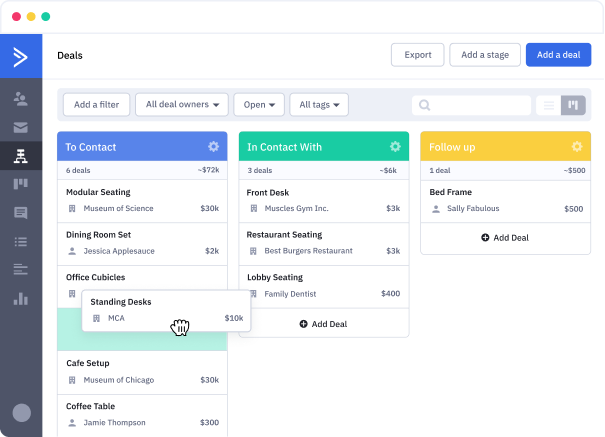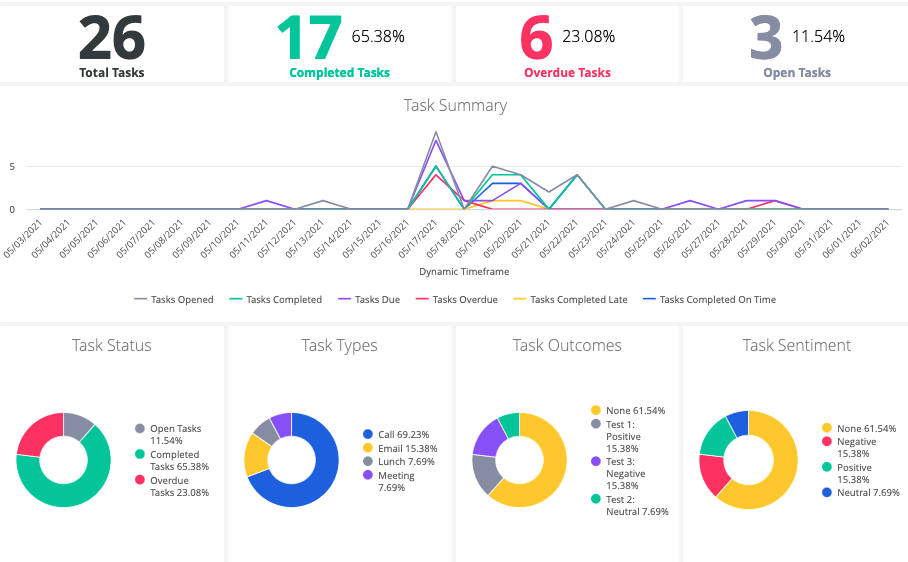For any B2B business, sales are inherently relationship-based. Each customer should be made to feel special, and should feel as though the people they interact with understand who they are, what they’re trying to achieve, and how your business will help them reach their goals. At ActiveCampaign, we pride ourselves on our deep understanding of each prospective customer that comes through our doors, or rather, our website.
So far, we’ve shared how we’ve been using our platform from the beginning to grow into the business we are today. As we’ve grown, we’ve been able to maintain not only a steady stream of leads each month, but a steady flow of qualified leads each month. We owe at least part of our success to our own platform and the level of organization that it enables for our sales teams. We believe that what you put into a platform is what you get out, so we are always looking for ways to improve lead generation and qualification by iterating everything, always.
We practice what we preach
With any size sales organization, it is important to have a clear, precise communication structure so deals can keep moving forward. When you feel there isn’t time to write out emails to a manager, update deal notes, or progress a deal along each stage in a pipeline, it’s time to consider how Sales Automation tools can help.

We promote our own automation tools and features because we know that they work. Every day, our sales development team provides updates to their managers or other reps quickly and efficiently, so they can all stay informed while saving time and focusing on having real conversations with real people.
Let’s start from the beginning. A lead can be added to the ActiveCampaign CRM in a couple different ways. They can either start a free trial or submit a form on the website asking for pricing info or a demo of the platform.

If the prospect starts a trial, they are put into an automation that our Revenue Operations team has set up to correctly route the lead to the right team. As the prospect sets up their trial account and starts interacting with different areas of the platform, they are sent a number of emails and different content to demonstrate the value of ActiveCampaign. It’s important to keep prospective customers engaged and informed during the trial experience, which we cover in more detail in our recent post.
When someone is interested in learning more about our pricing, or wants to book a demo of our product, we make sure they are connected to a real person quickly. Depending on the form they submit, a lead is created in our CRM and routed to the right team. We aim to track where the prospective customer is located, so we can offer the best service and ensure our team has as much key information from the start as possible. It also helps that across ActiveCampaign, we speak 26 languages, so every person can chat with someone in their native language. We have sales representatives in multiple countries, from the US, to Brazil, across Europe to Australia, all able to help our customers find the right plan.

We divide our sales team into a few groups to stay organized and cover every phase of the sales cycle. Our Business Development team helps to qualify the leads that come in through the above methods. They qualify either incoming or outbound leads, and even begin expansion discussions to help grow existing customers. They are responsible for initial conversations, discovery, and moving the lead along the beginning stages of the pipelines in the CRM. From there, an Account Executive takes over and tailors each conversation to the customer, covering all relevant features and answering any questions the lead might have. It’s so crucial for communication between these groups to be clear and methodical, otherwise key details could be lost in translation, resulting in a poor experience for the customer.
How does the magic happen? (And how does it stay that way?)
One way the reps stay in contact and ensure solid communication is through deal notes. Using deal notes, one rep can add a summary of who the customer is and what they’re looking for, adding more detail than simply adding tags or inputting data into the fields (which is still very important, of course). Tags are also utilized in the CRM to add context around each prospective customer. Tags can be applied automatically and reflect different products they’re interested in, which segment they’re part of, and more.

Another creative way our reps update deals and keep each other informed is through lead scoring. Lead scoring is an automated way to qualify leads while they interact with different areas of ActiveCampaign. Whether they engage with an email, have a meeting with a rep, or if they download a piece of content, we add (or subtract) a numerical value to their deal so our teams know who is a hot lead, or who still needs to be warmed. Reps can also automatically trigger email notifications and assign tasks based on lead score changes, so they can follow up personally with the deals most likely to close.

For our customers who are on our Professional or Enterprise plan, win probability lets you know where to dedicate your time and energy by assigning a percentage of likelihood that a specific deal will close. Like lead scoring, win probability rates can be adjusted automatically depending on a customer’s action, or inaction. It can also spark an automated email to another sales rep when a score increases or decreases. Both features are great to inform managers or team leads so they can step in and offer support for a rep, or track when a deal is going well.

Speaking of managers, it’s really important for us that our sales reps are doing their best work and feel supported during the sales process. In the CRM, managers can filter a pipeline by user to track a specific rep’s progress toward a quota, analyze a specific deal, or talk about any opportunities to improve. With the Task Outcomes report, managers can see a high level view of different tasks throughout the sales cycle, instead of looking into each note on customer interactions. Task types that can be reported on include phone calls, emails, review meetings, or even text messages. They can quickly scan the history and identify which activities are the most important to their team. The managers can also drill down into a specific rep’s outcomes, to provide clear, actionable feedback on how to improve or discuss wins.

The proof is in our customers’ success stories
ActiveCampaign customer Smart Gets Paid talked to us a bit about their success in using the CRM and sales automation within the platform. Leah Neaderthal started her business back in 2010, and aims to teach other business owners how to sell their work and get what they’re owed. Through great content and courses, Leah has grown her client list and created a unique approach to selling that feels natural and conversational – much like the way we like to sell ActiveCampaign!

“I started developing a selling methodology that really started working and felt really comfortable…Now I teach other women to use that same methodology in their business to land their B2B consulting and coaching clients. Because, I believe that nobody should have to struggle to get clients into their business.”
By using ActiveCampaign’s CRM and sales automation features, Smart Gets Paid has seen incredible growth. Since adopting ActiveCampaign, Leah spends 50% less time on administrative tasks, which is great so she can focus on the 2,782% increase in new leads she has in her pipeline.
Leah said it best:
“One of the things that I tell people is that everybody needs a CRM, but it goes beyond simply CRM. It really comes down to asking yourself what type of business you want to be in the future, not the business that you are right now. If you want to be the type of business at scale, if you want to serve as many people who need your help as possible, and have the same degree of impact and visibility as some of the people that you admire, you need a tool that can get you there, and that’s why I chose ActiveCampaign.”
Want to see how impactful our sales automation tools are for yourself?
